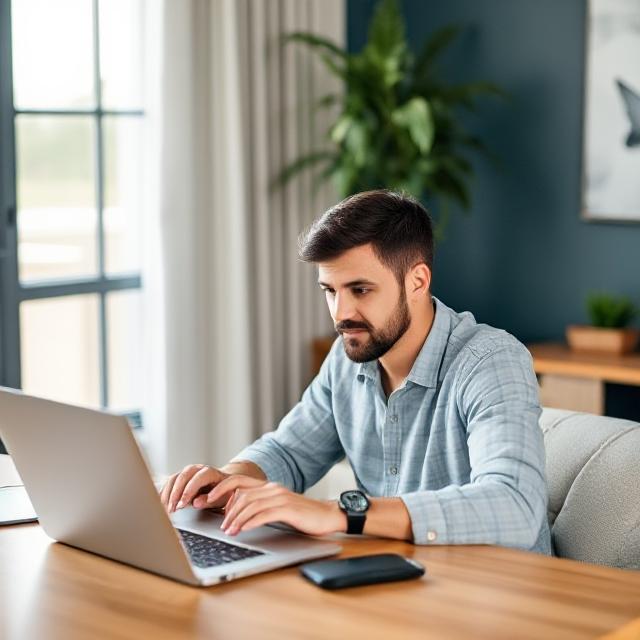Occupational Health Tips for Remote Workers matter more than ever as home and hybrid setups become the norm.
Without the built-in guardrails of a traditional workplace—supervisory oversight, facility maintenance, and ergonomic furniture—small risks can quietly snowball into musculoskeletal pain, burnout, or safety incidents.

This guide distills senior OHSE best practices into practical, day-to-day habits you can apply at home to protect your body, mind, and productivity.
- Occupational Health Tips for Remote Workers: Build an Ergonomic Base That Fits You
- Occupational Health Tips for Remote Workers: Move Early, Move Often
- Occupational Health Tips for Remote Workers: Protect Mental Health and Set Boundaries
- Occupational Health Tips for Remote Workers: Light, Air, and Noise
- Occupational Health Tips for Remote Workers: Hydration, Nutrition, and Micro-Fuel
- Occupational Health Tips for Remote Workers: Eyes, Hands, and Repetition
- Occupational Health Tips for Remote Workers: Electrical and Fire Safety at Home
- Occupational Health Tips for Remote Workers: Security, Privacy, and Lone Working
- Occupational Health Tips for Remote Workers: Plan the Day Like a Safe Job
- Occupational Health Tips for Remote Workers: Wellbeing Signals and Early Reporting
- Occupational Health Tips for Remote Workers: Practical Daily Checklist
Occupational Health Tips for Remote Workers: Build an Ergonomic Base That Fits You
An effective workstation begins with neutral posture: ears over shoulders, shoulders relaxed, elbows close to your sides at roughly 90°, wrists straight, and hips slightly above knees.
Raise your screen so the top third is at or just below eye level, and bring the monitor within arm’s length to reduce neck strain. If you use a laptop, pair it with an external keyboard and mouse plus a stand.

A chair with lumbar support is ideal, but you can add a small pillow or rolled towel to support the natural curve of your lower back. For a deeper setup walkthrough, see our in-house guide to an ergonomic home office setup.
Occupational Health Tips for Remote Workers: Move Early, Move Often
Static postures are a primary driver of discomfort. Set a gentle cadence: five minutes of movement every 30–45 minutes beats a single long workout at day’s end.
Alternate between sitting and standing if you have that option; if not, vary your sitting posture.

March in place during calls, perform shoulder blade squeezes, or do 10 calf raises while waiting for the kettle. The 20-20-20 rule (look 20 feet away for 20 seconds every 20 minutes) helps eyes and posture together.
The World Health Organization offers practical context on activity targets you can adapt to your schedule (WHO physical activity guidance).
Occupational Health Tips for Remote Workers: Protect Mental Health and Set Boundaries
Psychosocial risk management is part of OHSE, not a “nice to have.” Define a start-of-day ritual (dress, five deep breaths, to-do review) and a shutdown routine (document wrap-up, stretch, device hand-off to a charging station away from your relaxation space).
Use a shared calendar to display your availability and planned focus blocks so teammates don’t unintentionally fragment your day.

When stress spikes, use brief “micro-recovery” breaks—walk, box breathing, journaling—to reset your nervous system.
If you or your team need more structure, our mental health for remote teams checklist outlines policies and support options you can adapt.
Occupational Health Tips for Remote Workers: Light, Air, and Noise
Good lighting prevents headaches and eye strain. Position your screen perpendicular to windows, and balance task lighting with overall room light to minimize glare. Fresh air reduces pollutants and sleep-sapping CO₂ buildup—crack a window for a few minutes each hour if conditions allow.
A quiet environment supports focus; where noise is unavoidable, noise-dampening panels or a headset can reduce cognitive load.
If you’re interested in general Canadian wellness guidance for home workspaces, CCOHS provides accessible resources (CCOHS).
Occupational Health Tips for Remote Workers: Hydration, Nutrition, and Micro-Fuel
Dehydration often masquerades as fatigue or a mid-afternoon headache. Keep water within reach and set a nudge (timer or app) to sip regularly.

Aim for steady energy foods—protein plus fiber—rather than sugar bursts that crash your focus. Schedule lunch away from your screen; a true break boosts creativity and reduces mindless snacking.
Occupational Health Tips for Remote Workers: Eyes, Hands, and Repetition
Take eye-care seriously: besides the 20-20-20 rule, bump font sizes and increase line spacing. If you do high-volume typing or pointing, reduce friction with a full-size keyboard, larger mouse, or trackball.
Keep commonly used items within the primary reach zone (elbows at your sides) to limit shoulder strain. The NIOSH ergonomics pages are a great reference for musculoskeletal prevention basics (NIOSH ergonomics).
Occupational Health Tips for Remote Workers: Electrical and Fire Safety at Home
Treat your home office like a workplace. Use a surge protector with a resettable breaker. Avoid “daisy-chaining” power strips and never pinch cords under furniture or rugs. Keep beverages away from outlets and electronics, and check that smoke alarms and a small ABC extinguisher are within easy reach.
Unplug or power-down devices at day’s end; it’s good for safety and for your mental “close the loop” routine.
Occupational Health Tips for Remote Workers: Security, Privacy, and Lone Working
Security is a health and safety issue when it impacts stress, workload, or the integrity of health data. Use separate accounts for work and personal use, update your OS and applications, and enable multi-factor authentication.

Confirm your incident-reporting path for phishing or data concerns, and keep emergency contacts visible. The Canadian Centre for Cyber Security maintains approachable guidance for home and small-office users (Cyber Centre).
For broader OHSE perspectives and Canadian best practices, explore articles on OHSE.ca (OHSE.ca).
Occupational Health Tips for Remote Workers: Plan the Day Like a Safe Job
Borrow from job hazard analysis: list your highest-impact tasks, note risks (tight deadlines, complex analysis, long video calls), and plan controls (timebox meetings, scheduled breaks, headphone swap, stretching).
Use meeting hygiene: short agendas, default 25- or 50-minute slots, and clear “camera optional” guidance where appropriate.
These small controls are cumulative—they prevent fatigue, protect posture, and reduce error rates that can cascade into overtime stress.
Occupational Health Tips for Remote Workers: Wellbeing Signals and Early Reporting
Early reporting is prevention. Track simple signals: sleep quality, neck/shoulder soreness, headaches, eye strain, and end-of-day energy.

If any trend lasts more than a week, escalate: adjust your setup, book a virtual ergonomics check, or discuss workload with your supervisor.
The Canadian Mental Health Association can help you recognize when stress requires additional support (CMHA).
Occupational Health Tips for Remote Workers: Practical Daily Checklist
Build a five-minute start/stop checklist to make these practices automatic. At start: water filled, chair and monitor adjusted, to-do list focused to three priorities.
Midday: 10-minute walk, screen break, shoulder mobility. Shutdown: clear desk, note tomorrow’s first task, power down and leave the workspace.
If you need local services—physio, optometry, or ergonomic equipment—browse nearby options through our places directory to keep health care and supplies close at hand.
Putting It All Together
Remote work thrives when you treat your home office like any other workplace: hazards identified, controls applied, performance reviewed.

The formula is simple but powerful—fit the workstation to you, move more than you think you need to, protect your mind as carefully as your back, and make safety a daily habit. As your routine stabilizes, refine your ergonomics and meeting hygiene, and revisit your checklist monthly.
The result is a safer, calmer, more productive day—exactly what Occupational Health Tips for Remote Workers are designed to deliver.

No comments yet